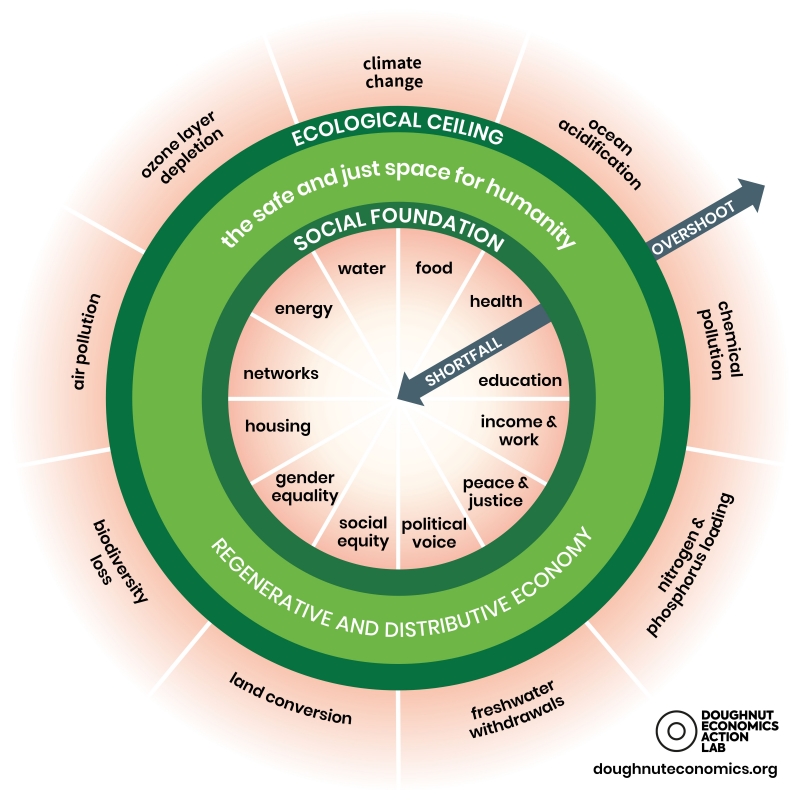Sustainability means that a biological population can be maintained at the given number of individuals indefinitely; Without detrimental effects on other populations (environment), or the quality of life of the individuals of that population and their future generations. Important factors that influence the sustainability of the human population are its size, its consumption level and the resulting pressure on the environment.
But of course, it’s not just about humans. Animals and other living beings contribute strongly to the complex ecosystem on Earth, the premise of human existence. Some eight million plants and animal species live on Earth. A 2019 United Nations report found that of those eight million, one million species will become extinct within a few decades – unless we take action now. For ecosystems, it takes millions of years to recover, which is why action is crucial.
Thousands of scientists are stressing that planetary limits have been exceeded and that it is vital to talk about consumption patterns and the number of people on Earth.
Consumption

Every human being has the right to a minimum of prosperity to meet basic needs, such as a home, food, clean water, energy supplies, medical facilities, infrastructure, etc.
Better distribution of resources is necessary but not enough since the current total consumption is beyond the Earth’s carrying capacity. The total demand for resources is the mathematical product of the consumption level and the human population size, which both have to be addressed simultaneously.
Population

Over many thousands of years, human population grew up to 1 billion around 1800. Since then, through many developments (fossil fuel, agriculture, technology), it has been growing exponentially. The sheer combination and consumption and this growth resulted in an unsustainable population.
Current forecasts show a human population increase of 40% before stabilizing around 2100 at 10 to 11 billion people.
Environmental loss

An unsustainable population affects its environment in various ways, resulting in climate change, dramatic loss of biodiversity and altered ecosystems, soil erosion, poor air quality and undrinkable water (to name a few). Additionally, increasing demand due to unsustainable population levels exhausts natural resources, for example (fresh) water, sand, oil, natural gas, coal and metal ore.
Biodiversity loss is one of the most pressing consequences of an unsustainable population. The more space humanity needs, the less there is for other species.
Doughnut Economics
How can we provide a high quality of life to everyone within the ecological boundaries of the planet? The doughnut of social and planetary boundaries is a diagram that summarizes the greatest challenges humanity faces.
The social foundation represents the ‘minimum requirements’ in order to have a just and fair world. This foundation can best be summarized by the Global Development Goals (SDG) of the United Nations. For a sustainable population, this wealth must be made available within the ecological ceiling of the planet, which are represented with the 9 planetary boundaries (identified by the Stockholm Resilience Centre).
Achieving such a delicate balance between social needs and ecological limits is easier with a lower population size, and vice versa becomes more challenging with an increase in population size.

Impact = Population x Affluence x Technology
I = PxAxT is the a simplified mathematical notation of a formula put forward to describe the impact of human activity on the environment.
In order to prevent the impact of an increase in population size and the increase in consumption (Population X Affluence), humans must balance the carrying capacity of the Earth in order to be able to continue to carry a certain number of people and their activities. Technological developments could ensure that more people can live on Earth, but at the same time further deplete the natural resources so that fewer people can live on Earth in the longer term.
We must work with all three factors in order to achieve a safe and just humanity.

